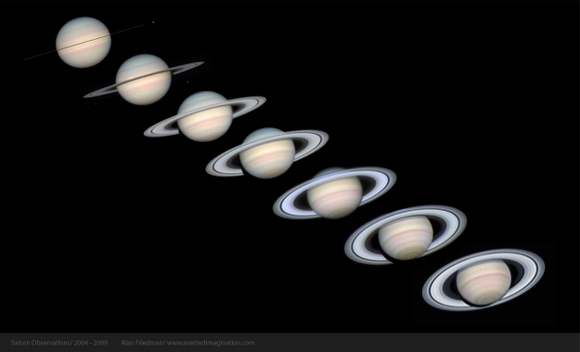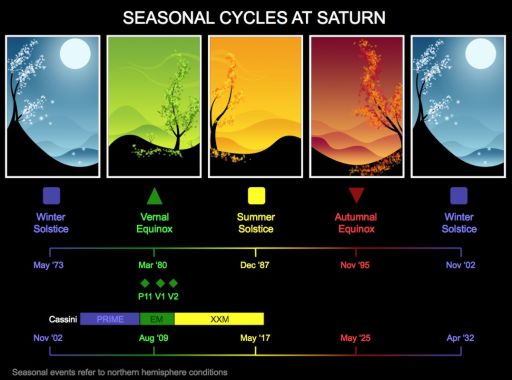Most science enthusiasts would call this planet as “the jewel of the solar system” mainly because of its beautiful rings, or they would refer to it as the “gas giant”. It’s not the kind of gas that you’re thinking of — it’s a planet that’s mostly composed of hydrogen and helium. We learned basic facts about when we were in school — the sixth planet from the sun and the second largest planet in the solar system, next to Jupiter. Yes, we are talking about Saturn.

Table of Contents
What makes Saturn so special?
Did you know that Saturn isn’t the only planet with rings? Jupiter, Uranus and Neptune also have rings but their rings aren’t as visible or as beautiful as Saturn’s. If you take a closer look at Saturn’s rings, you’ll see a whole bunch of dust, ice and rock floating around the planet independently. It’s also the planet with the least density (0.687 grams/cubic centimeter) and it’s because of this very reason that it’s going to float if you place it on a body of water, that is if you can find one large enough for the entire planet to fit on.
The Case of the Missing Rings
The very rings that make this planet unique disappear every 14-15 years. This phenomenon is called “ring plane crossing” where it turns its rings edge-on to earth along its way of going around the sun. The rings actually vanished in 2009. Not to worry though because it’s the best time for scientists to discover new moons and outer rings.

When the same thing happened in 1612, Galileo, who was an avid fan of the planet, become frustrated and decided to briefly put a hold on his study of the planet. He did predict, however, that the rings will return and they did or else we wouldn’t be talking about them, right?
Can I see it for myself?

There’s a slight chance that you already might have seen the planet Saturn. Yes it’s true! Just from where you are and without the aid of a telescope. Though the distance of Saturn from the earth is constantly changing, you can imagine it as 8-11 times the distance (1.2 billion – 1.7 billion kilometers) between the earth and the sun. So going back to spotting it with your naked eye, you can expect it to appear like a small sparkling speck, with the rings not being visible, just like a regular star. May 2013 is the best month to watch out for Saturn because it’s going to appear in the night’s sky the whole month.
Moons, Moons and more Moons
Earth has one, Mars has two, Uranus has twenty seven, and Saturn — second to Jupiter with sixty seven — has sixty two moons. One of those moons is called the Titan and it is the second largest moon in the Solar System (bigger than the planet Mercury). Because of this, it’s interesting to know that you can gander at its beauty with a pair of binoculars. Only a few of these moons have been discovered, named and photographed. The last 4 of which were discovered by NASA’s Casinni orbiter. Some examples are Rhea, Iapetus, Dione, Thethys, Enceladus and etc. Most of these moons, if you noticed, are named after the Titans, the giant brothers and sisters of the god Saturn.

Visiting Saturn
This planet, so far, has only had 4 visits. One was at 1979 when Pioneer II flew within 20,000km of the planet. The second and third ones were at 1980 and 1981 by Voyager I and Voyager II. The latest visit, the fourth one, is by Cassini in 2004 with the aim of exploring the known moons from the planet and taking photographs of them. Hopefully we’ll get more spacecrafts to the planet in the near future.
Living in Saturn?
Here’s the thing, Saturn might not be the most livable place on the solar system but the good news is Titan, the planet’s moon, was listed as one of the most habitable alien worlds. Well that and the exoplanet Gliese 581g. There were two categories set up by the research team: the Earth Similarity Index (ESI) and a Planetary Habitability Index (PHI). The ESI is for checking if there are Earth-like conditions that can harbour life. The PHI is used to rate the habitability of the world — measuring the chemistry, assessing the surface, the atmosphere and etc.
Time and Seasons on this planet
Time on this planet is faster compared to the regular time that we have here on Earth. A year in Saturn, for example, is already about 30 Earth years. When talking about a whole day, here on Earth it’s basically 24 hours but it’s quite short in Saturn with only 10 hours and 39 minutes in an entire day. Time flies fast but Saturn is one of the slowest moving planets in the Solar System. Ironic isn’t it? Have you ever heard of the expression “saturnine”? It means, gloomy or sluggish.
Other than that, since this ringed planet spins on a tilt (27 degrees), you’ll be able to experience different seasons. The seasons will run much much longer since Saturn takes 30 Earth years to orbit the sun. Let’s take summer for example, it will last approximately 8 years.

